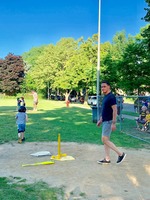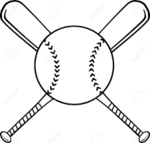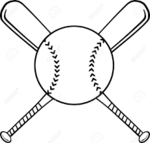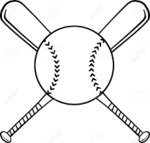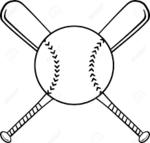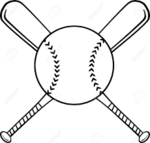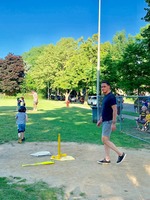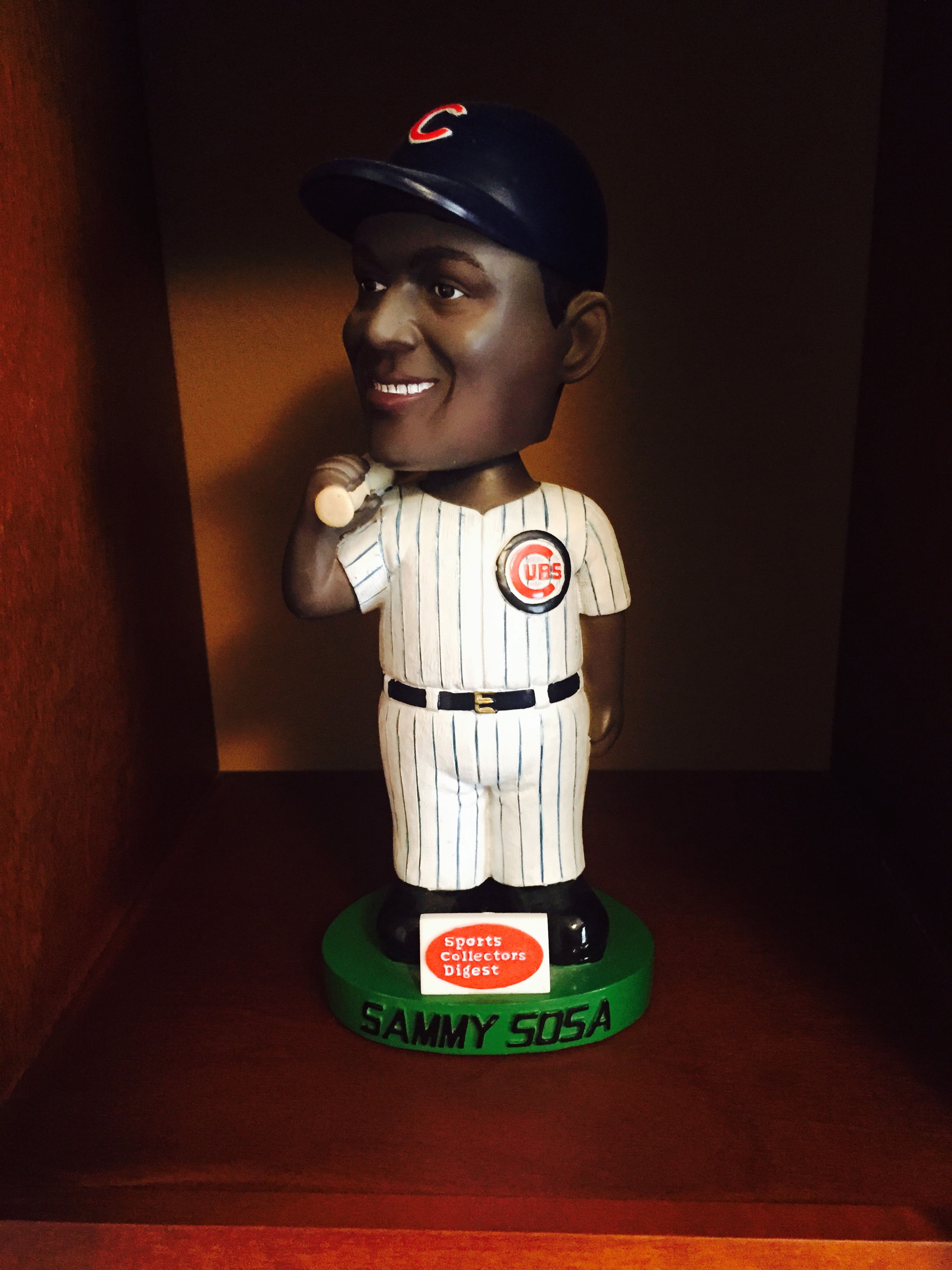Chronicles of a Little League coach: A story told in 6 innings
 Wednesday, November 29, 2017 at 12:04PM
Wednesday, November 29, 2017 at 12:04PM Introduction
The six essays that follow are for my son, Tyler. Not for the 14-year-old high school freshman he is today. But for who he will be someday in the future. Maybe for the day he becomes a father, if that day should ever come. But for someday when he might appreciate them. When he might understand why I wrote them for him.
Why six? Because that’s the length of an intermediate Little League game: six innings. And most of these stories are inspired by that level of youth baseball.
Tyler started playing baseball at the T-ball level in 2008, when he was still in preschool. I was an assistant coach for that team and coached him, as either head or assistant coach, for all but one of the 10 years of youth baseball that followed.
Why then do the essays not start until 2013? Why leapfrog over those first five years? Because the story that I’m telling begins when Tyler turned 10, after he graduated from T-ball and coach pitch, and began more competitive baseball. It is then that the true lessons learned from playing and coaching Little League baseball begin to take their shape and form. The six innings come together to tell the story of a complete game, spread out over five years, and how the son, and the coach, both grew over that time.
With that by way of introduction, all that’s left to say is, “Play ball!”
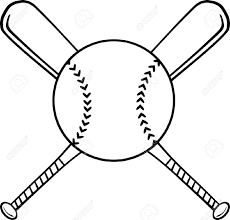
1st inning: Making adjustments
May 1, 2013
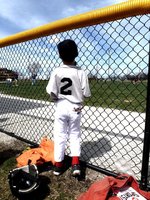 Baseball is not meant to be played in hail. That’s what my fourth grader said as he stood on third base, shivering. The third base coach couldn’t disagree. “Just keep moving,” I said with little trace of enthusiasm. “And blow into your hands.”
Baseball is not meant to be played in hail. That’s what my fourth grader said as he stood on third base, shivering. The third base coach couldn’t disagree. “Just keep moving,” I said with little trace of enthusiasm. “And blow into your hands.”
The pros wouldn’t have played in conditions like this and they make piles of cash. We do it for, what, the fun? For three long innings, my son and his teammates endured the pelting, the soggy cold, the mud, and the losing side of a 10-1 score. Until lightning struck and ended the game a half inning before it became official. Two excruciating hours that counted for nothing. Nada. All washed away as if it never happened.
If only it were as easy to erase the memory of it as it was the record of it.
“I don’t think I can do this another year,” I sigh on the drive home.
My wife nods judiciously. No words are needed. It’s not like she hasn’t heard this lament from me before.
It is just two weeks into the spring season and I’m already counting the days till it’s over.
There are countless times in coaching Little League that make you question why you’re doing it. Enduring not just the inhospitable weather but the parental politics and the difficult kids, the ones you just can’t seem to reach no matter how hard you try.
After coaching for five years, I've come to learn that for those countless times that you question why you’re doing it, there are always moments that answer your question.
Like last night, on a rare summer-like April evening, in the second inning, when my son is up to bat, and he looks at the first pitch in his eyes. He thinks it's a ball, and it is. But the umpire calls it a strike.
I've been preaching to him not to get frustrated and instead to make adjustments. When the second pitch comes in high, he swings. And misses.
I yell from 70 feet away, where I stand as the first base coach, "Protect the plate." I know he hears me.
The ball comes in high again, so he adjusts his swing, just like I coached him. The ball flies. Over the left fielder's head.
"Keep running," I call out as he turns the corner at first. He knows what that means.
When he crosses home plate, his teammates swarm him with hugs and pats on the back. He sheepishly smiles.
From where I stand, it’s the best view on the diamond. I wipe a tear that has welled in my eye. Must be the darned dirt that kicked up in the wind.
2nd inning: One for the books
April 24, 2014
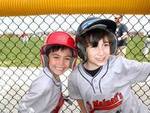 Tyler and JulianMy son’s best friend Julian is supposed to be on the DL. He’s not medically cleared to play any kind of sports. It’s amazing he’s here at all, dressed in uniform, sitting on the bench with his teammates.
Tyler and JulianMy son’s best friend Julian is supposed to be on the DL. He’s not medically cleared to play any kind of sports. It’s amazing he’s here at all, dressed in uniform, sitting on the bench with his teammates.
The boy’s father Rich and I have coached our sons together through T-ball and coach pitch and now kid pitch. Julian was just learning how to pitch. His mechanics are a little funky but sometimes that makes him more effective as his jerky motion throws the batters off their game. Control was his biggest problem.
Until six months ago when he was diagnosed with a rare form of leukemia. Ten years old and the world as he knows it has been turned completely upside down.
Three months ago, after an unsuccessful round of chemotherapy, Julian underwent a bone marrow transplant after a worldwide search for a donor came up with a match in Germany. He was confined to a hospital room for more than a month without any visitors besides his parents.
And miraculously, he’s here for the opening game of the spring season. He wanted to be there for his team. He wanted to be a kid again. A kid like other kids.
As fate would have it, we’re short one player. We have seven. If we can’t come up with eight, we forfeit the first game of the season. No one wants to start the season this way. We’d waited 10 months for this game. Julian had battled too much over the last six months just to be here.
Rich pulls me aside and tells me his plan. As I look down at the end of the bench, I say, “It’s your call.”
After he huddles with his son, Rich gives me the nod. Nothing in coaching prepares you for something like this. I walk over to the opposing team’s coach and explain the situation to him. He’s a little uncertain but he goes along with it. Then I explained to the umpire how we would field eight players but bat only seven.
And for two innings, Julian stood in right field. He wore his glove. But because he couldn’t run or throw, balls hit to him were handled by the center fielder. He literally just stood there. But it was a thing of beauty. And it saved us from forfeiting the game.
Worn down by all that he’d gone through over the last six months, and the reality check that he was still in the early stages of recovery and all the emotions of the day, Julian didn’t go out for the third inning. For the rest of the game, he sat on the bench.
The record book and the game stats don’t tell the story. In the record book, it will show that we lost the game. Because Julian didn’t bat or make any plays in the field, he won’t have any official game stats. Only a handful of parents were there to see it. It’s almost like Julian wasn’t there at all. But I can tell you that he was, and what he displayed on that baseball diamond beat anything I’ve ever seen at any level of baseball. When I think of the most courageous performances in the sport’s history Kirk Gibson hobbling around the bases and Curt Schilling pitching in bloody socks come to mind. But in my book, what I saw a Little Leaguer do today tops anything I’ve seen done by any Big Leaguer.
3rd inning: 2nd chances
September 13, 2014
 It is the top of the fourth of what would be a five-inning game. Our team is up 4-3, when my son, Tyler, walks to the plate with two outs and the bases loaded. This is his third trip to the plate this morning. The first two didn’t go so well. He took a called third strike on a ball that was a little low and outside in the first inning. In the third, he went down swinging. This looks to be his last chance. On a two ball and one strike count, he swings. The umpire calls him out. He looks to him, confused, and then lowers his head and starts walking away dejectedly.
It is the top of the fourth of what would be a five-inning game. Our team is up 4-3, when my son, Tyler, walks to the plate with two outs and the bases loaded. This is his third trip to the plate this morning. The first two didn’t go so well. He took a called third strike on a ball that was a little low and outside in the first inning. In the third, he went down swinging. This looks to be his last chance. On a two ball and one strike count, he swings. The umpire calls him out. He looks to him, confused, and then lowers his head and starts walking away dejectedly.
Tyler is half-way to the dugout, thinking his day has ended with three strike outs, when the scorekeeper approaches the ump. “Wasn't that strike two?” she asks.
The ump looks at his counter and realizes: she’s right. He’s mistakenly called him out.
The teams are sent back out onto the field. My son is sent back to home plate.
The ump leans over to Tyler as he stands in the batter’s box. “You better get a hit,” he says, “or I owe you a cookie.”
On the next pitch, Tyler swings again. Only this time he makes contact. The ball sails over the center fielder’s head.
When he touches first, I yell, “Keep running!”
Tyler ends up standing safely on second. Two runners cross home. The team takes a 6-3 lead. The inning is over because we’ve scored the maximum of five runs.
As it turns out, we needed those two extra runs. We held on over the next inning and a half to win 6-5. That second chance at the plate proved to be the game-winning hit.
The lesson learned: When life gives you a second chance, make the most of it. Swing for the fences. Even if it means giving up a cookie.
May 22, 2016
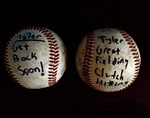 In Little League, coaches traditionally give the game ball to the game's standout player. Tyler's coach goes the extra mile by writing on the ball what it is the kid is being recognized for. On the other side of the ball he throws in the game date and final score. You have to wait an extra game to get it but it's worth the wait. It's a personal touch that makes it more than just a baseball and gives the kid something to remember about the game.
In Little League, coaches traditionally give the game ball to the game's standout player. Tyler's coach goes the extra mile by writing on the ball what it is the kid is being recognized for. On the other side of the ball he throws in the game date and final score. You have to wait an extra game to get it but it's worth the wait. It's a personal touch that makes it more than just a baseball and gives the kid something to remember about the game.
This season, my son has gotten two game balls. The first came as a surprise. He got it the first game after he went down with an injury to his right index finger, sustained in a pre-game warmup to the season's second game. He was not suited up but be came to the game to support his team. After the team won, the coach called the team together in the dugout and asked Tyler to join them. He said that they were giving the game ball to Tyler, noting that he'd be out for a while and that they'd miss all that he brings to the game. He ended by wishing him a speedy recovery back onto the field. It was a touching moment.
Jump ahead three and a half weeks later. I take Tyler out of school for his follow-up visit to the orthopedist. The x-ray shows the fractured bone at the tip of his finger has healed. Being cautious, the doctor says: "No baseball." I ask how long. He says another week. A week doesn't seem like a long time but it meant he would miss four more games, including a game that evening, in just a couple of hours.
On the drive back home, I ask him if he thinks he could play wearing the splint on the finger. We come home and try it, tossing around the baseball and taking some cuts with the bat. He says it feels good. It affects his throws a little but not so much that he couldn't play. He's not a pitcher anyway. So I tell him, "It's your call." He chooses to play.
So he suits up. At the field a few of his teammates do double-takes when they see him suited up. "Is that Tyler?" one asks. "Yeah, that's Tyler," another responds. He gets some pats on the back.
The coach puts him in centerfield for the game, figuring there's less chance of re-injuring his finger if he keeps him out of his usual position at shortstop. Two innings in, he makes a nice catch on a deep fly ball. The next inning, he hits a sharp line drive single up the middle. Then the next inning he makes an acrobatic diving catch on a liner to the outfield. "Wow!" his coach says to me in the dugout. "Wow!" No other kids make catches like that at this level.
I've watched and coached Tyler long enough to know that he has an endless supply of wows. The following game he made an equally acrobatic diving catch in center. He's that kind of player.
His team wins that first game back 13-5. In the dugout at the end of the game, the coached called the team together. He said there were a lot of players deserving of the game ball but he ultimately had to go with the sentimental choice. It was Tyler.
He now has two game balls and I won't be surprised if he's got another in him before the season ends in a couple of weeks. But the two he has serve as nice bookends to his season, representing the day he went out with an injury and the day he came back from the injury. I asked him which one meant more to him. He said the second, because that was the one he earned.
5th inning: Never a ‘Shadow’ of a doubt
June 9, 2016
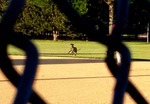 Shadow the dogLast night was my son's last game of the spring baseball season, and my first and only game as his team's head coach. I'd been an assistant coach all season long, even after my son went on the DL for three weeks with a fractured finger. Because the head coach had been called away on business travel, I was called in to replace him as head coach for the night.
Shadow the dogLast night was my son's last game of the spring baseball season, and my first and only game as his team's head coach. I'd been an assistant coach all season long, even after my son went on the DL for three weeks with a fractured finger. Because the head coach had been called away on business travel, I was called in to replace him as head coach for the night.
My son's team is headed to the playoffs and could even go as the top seed in its division if it can pull off a win in its last regular-season game on Friday. My son and I won't be there for that game. We will instead be following it on my Game Changer app from the airport as we wait for a flight to London. We'll be touring the British Isles with my family and will miss the rest of the season. Even the championship game, if our team advances that far.
That made last night our championship game. I even brought my world-famous chocolate chip cookies to celebrate with the team at game’s end.
Through the first six innings it didn't look like we'd be celebrating. Our team had been shut down offensively, managing just one run, on a steal of home base, through the first six innings. We were down 4-1 going into the bottom of the sixth. We looked beaten.
Then something most unexpected happened as our team was warming up in the field before the bottom half of the inning. The head coach's wife had brought the family dog, Shadow, to the game. After sitting on the sidelines for five innings, I guess Shadow decided the team needed his help. Spotting a dropped ball in the outfield, he ran for it, scooped it up in his mouth and then ran with it. All over the field. It was a thing of beauty watching him having the time of his life as our players' valiant efforts to grab his leash all failed.
The start of the bottom half of the inning was delayed five minutes while Shadow played his own game of catch-me-if-you-can. He won that game and took a victory seat in centerfield, guarding the ball in front of him.
When the coach's wife walked him off the field, both teams erupted in applause. I've seen a lot of baseball in my years, and it was one of the greatest moments I've witnessed.
I didn't call for a fourth outfielder. I'm not that good of a coach. But Shadow's unexpected entrance into the game changed the trajectory it seemed to be on.
Our team followed Shadow's lead by shutting down the opponent in the bottom half of the inning and then rallying for four runs in the top of the seventh, keyed by a clutch hit by my son on a nail-biting 3-and-2 count. They then held them scoreless in the bottom half of the inning for a most improbable 5-4 comeback win.
I ended my season with a perfect 1-0 record as head coach. My chocolate chip cookies never tasted so good. Of course, there was never a Shadow of a doubt as to the outcome.
6th inning: Growing into the uniform
June 20, 2017
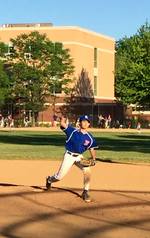 My son’s baseball season came to an end around 10:30 last night. I don’t think any of us – the players, the coaches, or the parents – saw it coming. It was the first round of a 32-team tournament featuring the North Suburban Youth Baseball league’s best – and we were heavy favorites. We’d gone 13-3 in the regular season, earning a No. 3 seed in the tournament. We were pitted against a 30-seed that had gone 5-6 in the regular season but had also won four of their last five. Even as we took infield before the game a worrisome knot grew in my stomach. You never want to face that team, the one that has gotten hot at just the right time.
My son’s baseball season came to an end around 10:30 last night. I don’t think any of us – the players, the coaches, or the parents – saw it coming. It was the first round of a 32-team tournament featuring the North Suburban Youth Baseball league’s best – and we were heavy favorites. We’d gone 13-3 in the regular season, earning a No. 3 seed in the tournament. We were pitted against a 30-seed that had gone 5-6 in the regular season but had also won four of their last five. Even as we took infield before the game a worrisome knot grew in my stomach. You never want to face that team, the one that has gotten hot at just the right time.
But this is not really about that game. It’s about my son.
My son has been playing youth baseball for 10 years now, from T-ball to coach pitch to regular old baseball. He’s had his ups and downs over those years. He was an All-Star in 2015 only to lose most of his 2016 season before it even started due to a broken finger. After watching him all these years, I sensed that he’d comeback in a big way.
He did just that. As the season unfolded, he slowly grew into the role as the team’s Dexter Fowler – the “You go, we go” sparkplug. He became the team’s leadoff hitter and led the team in runs scored with 31, averaging almost two runs scored a game. What he lacked in power, he made up for with speed and a keen eye. His 20 walks almost doubled that of any other player. He also led the team in stolen bases with 24.
He sparkled with the glove as well. Oftentimes making even the toughest plays look routine, he became the team’s starting shortstop – a position he never felt truly comfortable in because his arm was not all that strong. He felt he was better suited for second base, a position he rarely got to play because he was always needed somewhere else – usually at short but sometimes at third or center.
Twelve games into the season, he was asked to go even farther out of his comfort zone. The team was down four of its best players and needed someone to step up and pitch. He hadn’t pitched in a game in three years and he was being asked to pitch two innings against a strong team. We knew it was not likely to go well, and it didn’t. He gave up eight runs over two innings, for an earned-run average of 36.00 – though in his defense, he had no defense and probably most of those runs were unearned. But he did it. He took the ball for two innings and even struck out four batters.
At the next practice, the head coach teasingly asked him if he was retiring from pitching. He grinned and nodded.
In the last game of the regular season the team found itself in trouble. We were losing to one of the league’s strongest teams and again short-handed. We needed someone to close the game. The head coach’s eyes looked down the bench and they settled on my son.
Retirement was short-lived. My son doesn’t like surprises. He likes to see the lineup in advance of every game so that he knows what he’s got to do. This is one he never saw coming. When the coach put his arm on his shoulder and explained the situation to him, he just nodded. He warmed up his arm and took to the mound. I could barely watch. Not surprisingly, he struggled with his control. He walked the first batter. Just throw strikes, we told him. As if he didn’t know that. He did throw strikes. Unfortunately, his defense failed him. A couple of errors and a run followed. The best hitter walked up to the plate with two runners on base. If this were the stuff of poetry, the Mighty Casey would have struck out. But it was reality and the ball sailed over the fence. Four runs. Just like that. It was painful. The head coach asked me if he should go out to the mound and settle him down. “It won’t help,” I said. “He’s just not a strong enough pitcher to face the top of their lineup.”
The game was already basically over but we still needed three outs to get out of the inning. A lot of good pitchers would have unraveled after giving up a home run like that. My son is not even a good pitcher. He’s not even a pitcher. I could see that he wanted nothing more than to walk off that mound but he stood there and kept pitching, striking out the next two batters and then coaxing a lazy grounder to first for the third out. The head coach rushed out to him to pat him on the back. We lost the game 14-3. But, for me, it didn’t really feel like a loss.
That brings me back to last night. He led off with a sharp line drive to center just as we’d drawn it up. Only the center fielder ruined it by making a diving catch, robbing him of a single. The night went downhill from that point on. He went 0-for-3 with a walk and an RBI and scored two runs (one as a pinch-hitter where he stole home on a wild pitch). He struggled with his throws from short and asked the coach to move him to the outfield.
That’s the tough part about being the “You go, we go” guy. It’s a heavy burden to carry. Last night, he never really got going. Neither did the rest of his team. The result: a 13-9 upset.
Heads all hung low in the dugout at the end. A few tears were even shed. The kids on this team became really close. I’ve coached for nine of the 10 years that my son has been playing baseball, and this was the best team I’ve coached. For the season, they outscored their opponents 209-76. They won nine of their 13 games by the 12-run slaughter rule.
What I’ll remember from this season is not the loss at the end or any of the wins but that one game where my son got called out of retirement to pitch one last inning. Most would see it as mop-up duty. But, to me, it was a thing of beauty. Because it is where I saw my son really grow into that baseball uniform.
 Randy Richardson
Randy Richardson
Extra inning: Taking it on the chin
May 6, 2018
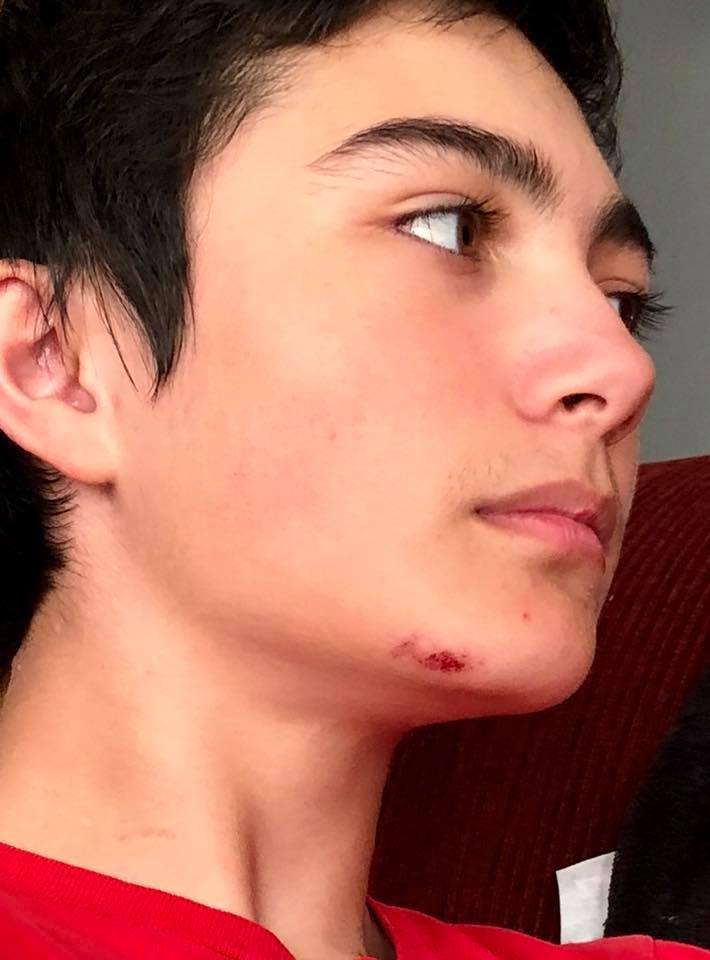 Compared to football or hockey, baseball seems like a safe sport. Players don’t typically tackle or punch one another. It’s usually a slow-moving, peaceful game.
Compared to football or hockey, baseball seems like a safe sport. Players don’t typically tackle or punch one another. It’s usually a slow-moving, peaceful game.
Which is why it’s so easy to forget that it’s called hardball. We get reminded of this when a fan gets hit by a foul ball. Or when a batter suddenly and unexpectedly falls to the ground.
Cubs fans saw this two weeks ago when a 96-mph fastball struck star third baseman Kris Bryant in the head. It shakes you to the core.
Bryant was lucky. The only visible mark: a laceration above the eye from his sunglasses. One wonders what might have been had he not been wearing the glasses.
But mostly it’s what you can’t see that is so frightening.
Again, Bryant was lucky. There were no signs of concussion. Still, the Cubs organization prudently took an abundance of caution and sat their star player for the next week.
You don’t just recover from being hit in the head with a baseball. Not fully. Even if there are so signs of concussion, there are mental scars that are left behind. And baseball is a mental game. You can’t stand in that batters box and be fearful that the next pitch could seriously harm you. Even though you know that it can.
That’s what I was thinking about when I watched my son sit out Saturday’s game against Maine West.
The afternoon before he was in the starting lineup against Maine South. He’d worked hard to get that starting position on his high school’s freshman team.
In the early part of the season he barely played. Like any baseball player, he’s had his ups and downs over the years. He’s batted at the bottom of the order but always fought to get back to the top. That’s just the way he is. He’s quiet. He lets his bat do the talking.
Aside from one season when he broke a finger, he’s never not played. So freshman baseball has been a tough lesson for him. For much of the first half of the season he rode the bench, rarely getting a chance to play. It was cold,and not just because of the un-baseball-like weather. Especially as he watched his team lose game after game.
Then late in a scoreless game he hits a grounder to the right side and hustles to first. He’s deceptively fast and surprises the first baseman who beats him by a step. But he drove in the runner from third. His teammates mob him when he returns to the dugout. That ground ball ends up being the only RBI in a rare 1-0 win for the Evanston frosh team.
That opened the door for his coach to give him a chance. He started three straight games and played well. Then in his best played game he injured his wrist stealing home. Nothing serious but it took him out of the game and out of the starting lineup.
On Friday he was back in the starting lineup. In his first at bat the coach signaled for a bunt, trying to take advantage of his speed against a tough pitcher.
On the first pitch he squared to bunt. The ball came in high, he didn’t even have time to react and didn’t even think about pulling back the bat.
The ball hit him square in the chin. Because he didn’t pull back the bat, the umpire called a strike even though it hit him in the face. He didn’t even get the free base and had to be removed from the game for another player, who struck out.
Hardball luck. But like Kris Bryant, it could have been much worse. On the ride home his friend and teammate Noah said you could see the stitches of the ball on his chin. I was glad that it was an away game. It’s better that I didn’t see it happen. Luckily nothing broke. No teeth or facial bones.
Even though he passed the conclusion protocol, the coach kept him on the bench Saturday. It sucks to suit up and not play. But I get it. The coach had no choice, not when he saw the abrasion the ball had left on his chin. It looks like something you would get from a head-first slide. But it is the visible mark of what a baseball can do to your face.
The season is nearing an end. While shortened by the unusually cold spring, the season has felt long. For my son, that one pitch in many ways sums it up. Both literally and figuratively, he’s taken it on the chin.
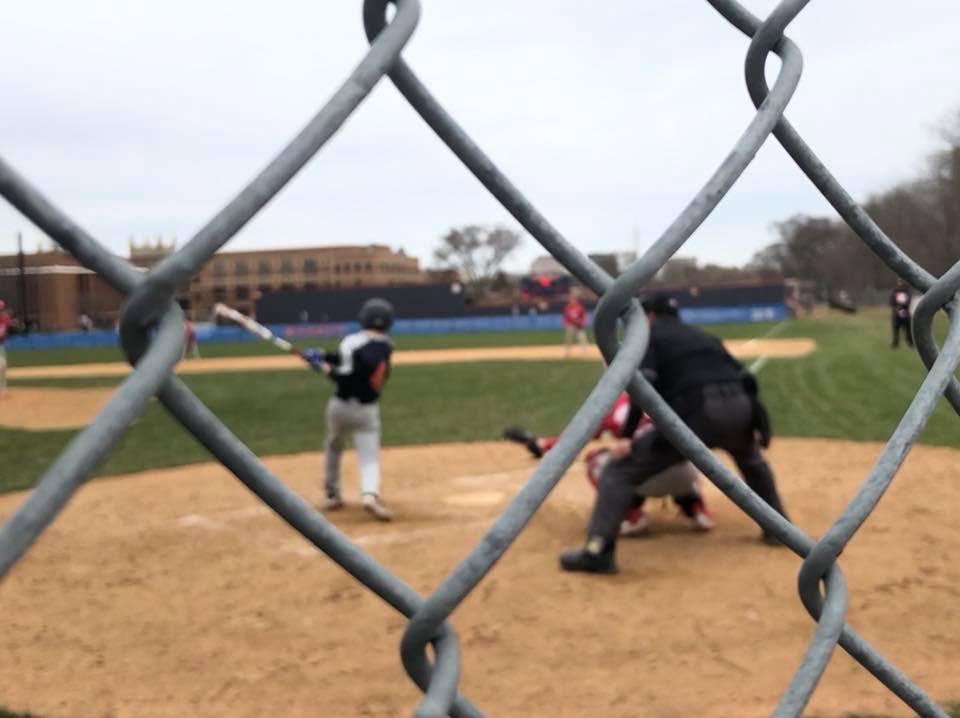 Yet all the adversities have been good for him, I think. He’s learned discipline, perseverance, patience and mental toughness, characteristics that will make him a better player. And sooner than I like to think, a better man.
Yet all the adversities have been good for him, I think. He’s learned discipline, perseverance, patience and mental toughness, characteristics that will make him a better player. And sooner than I like to think, a better man.
I don’t know if he’ll try out for baseball again next year. He’s noncommittal at this point. I hope he does. He’s nothing fancy. He’s a bit of an old-school player, and looks like one now with the welt on his chin. He doesn’t swing for the fences. He just makes contact and then runs as fast as he can, which is faster than any other kid on the field.
He’s the kind of player every team needs. One that doesn’t strike out, hustles and does the little things. The Cubs could use a player like him. He’s not flashy, but he’s solid and dependable. The kind of player that helps his team win games. This year, he just hasn’t been given many chances to show it.
 Randy Richardson
Randy Richardson
Another extra inning: Back to T-Ball
